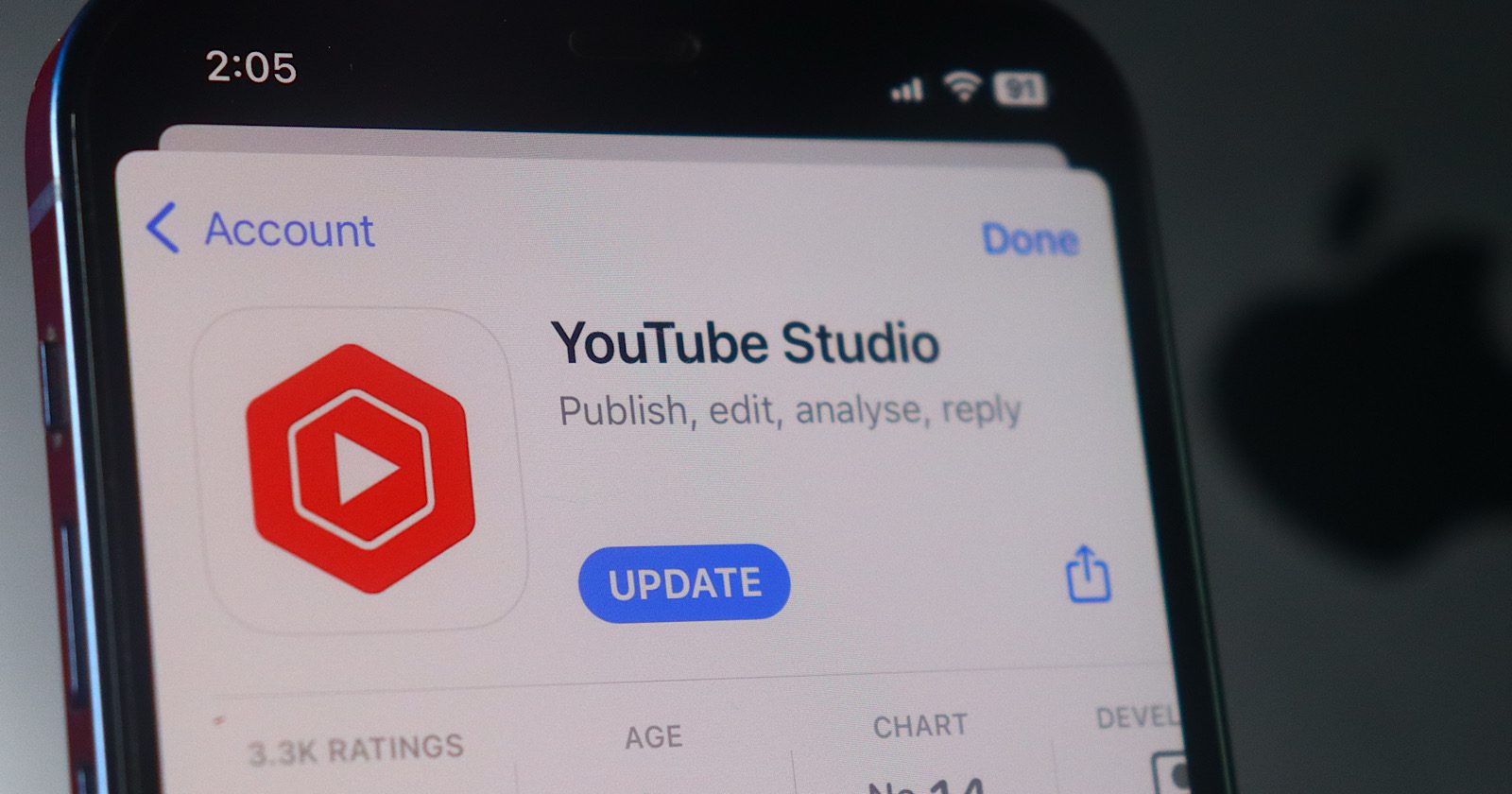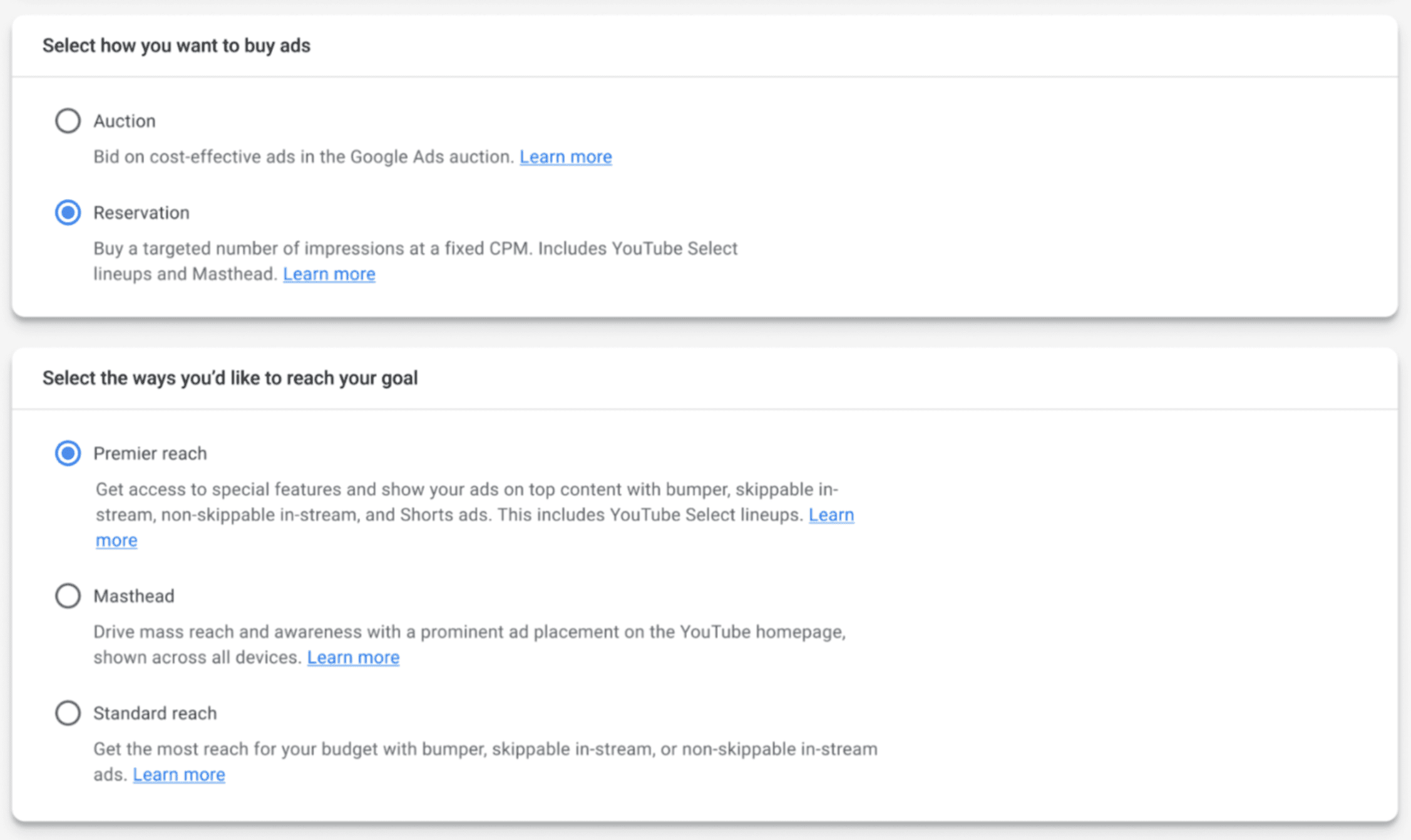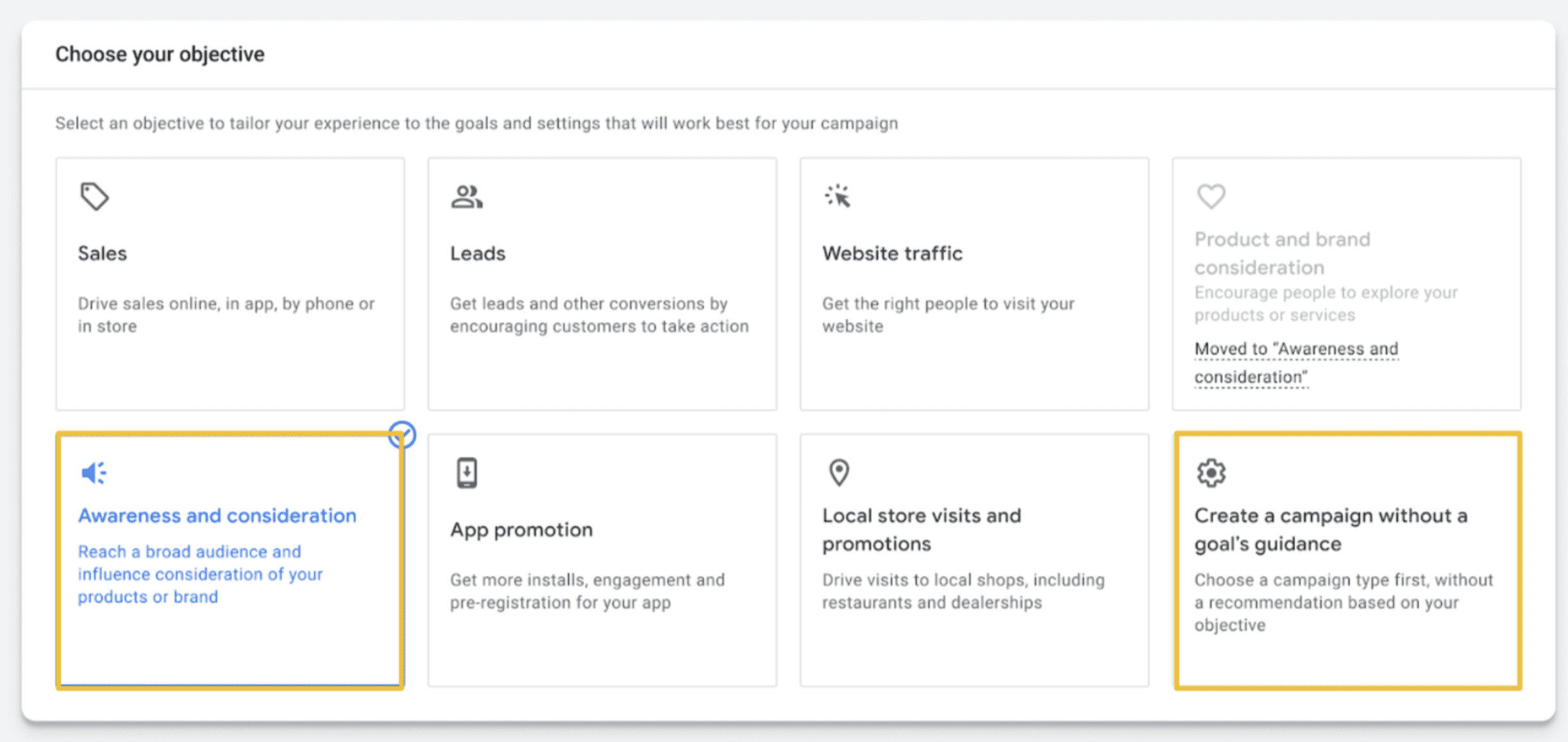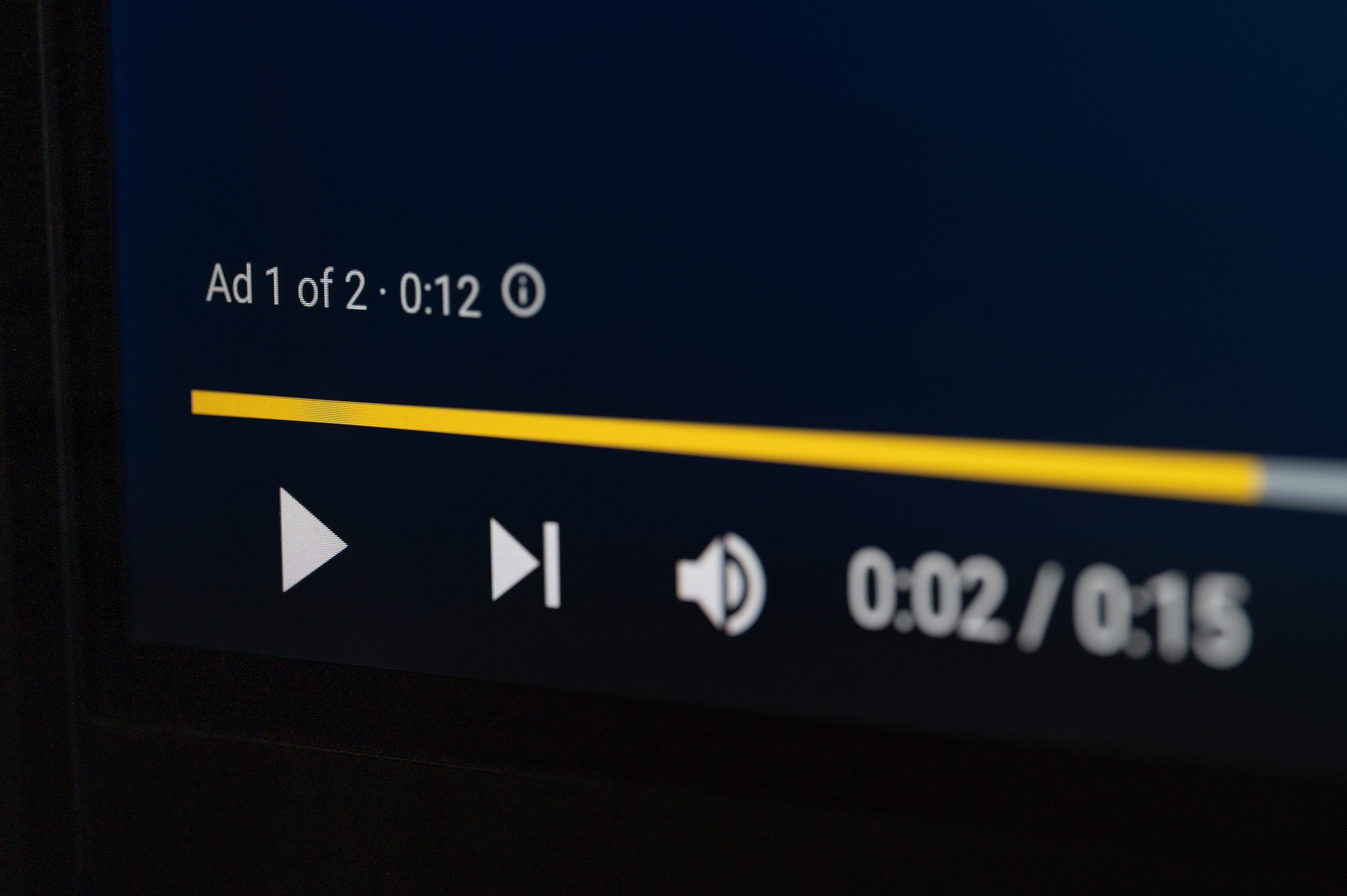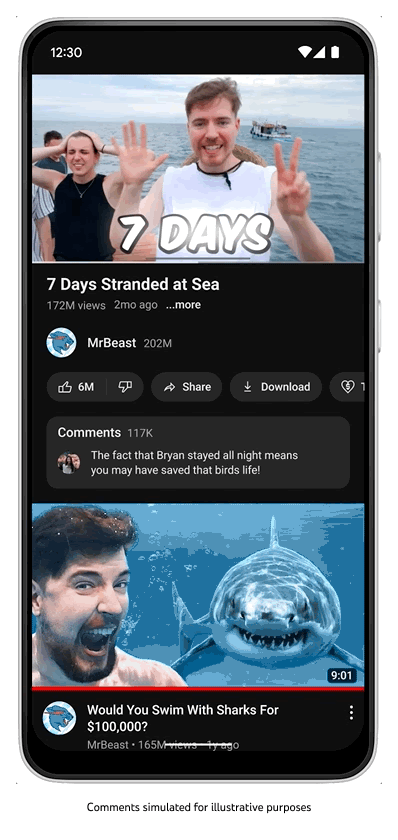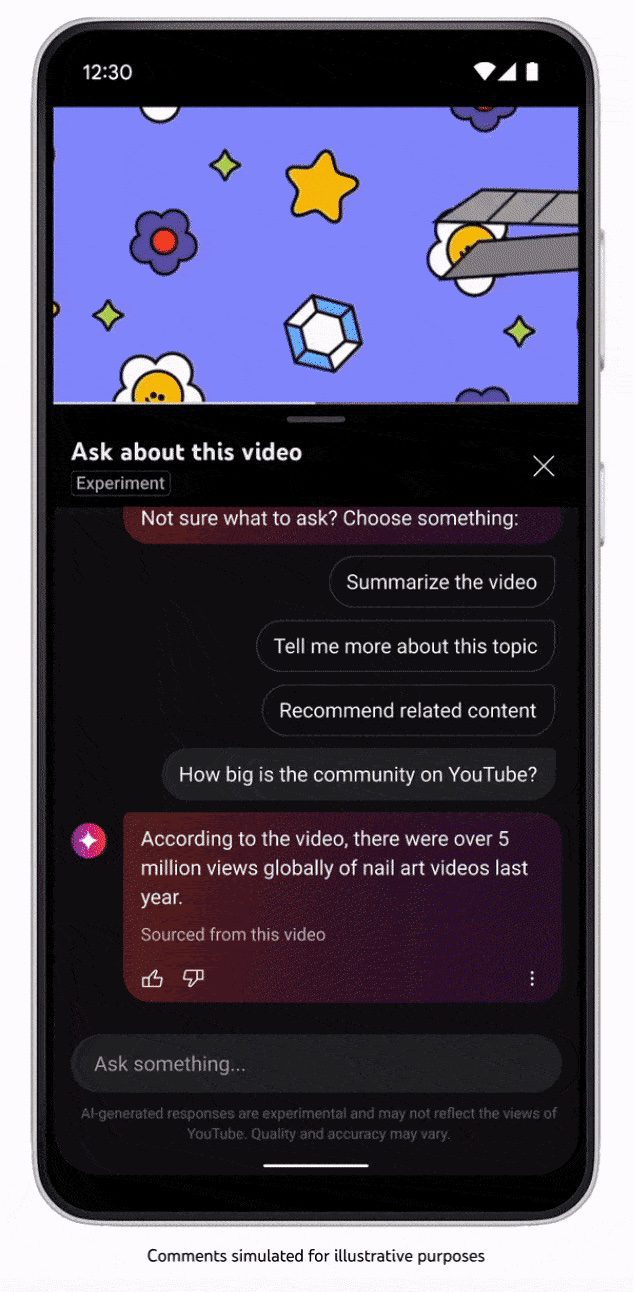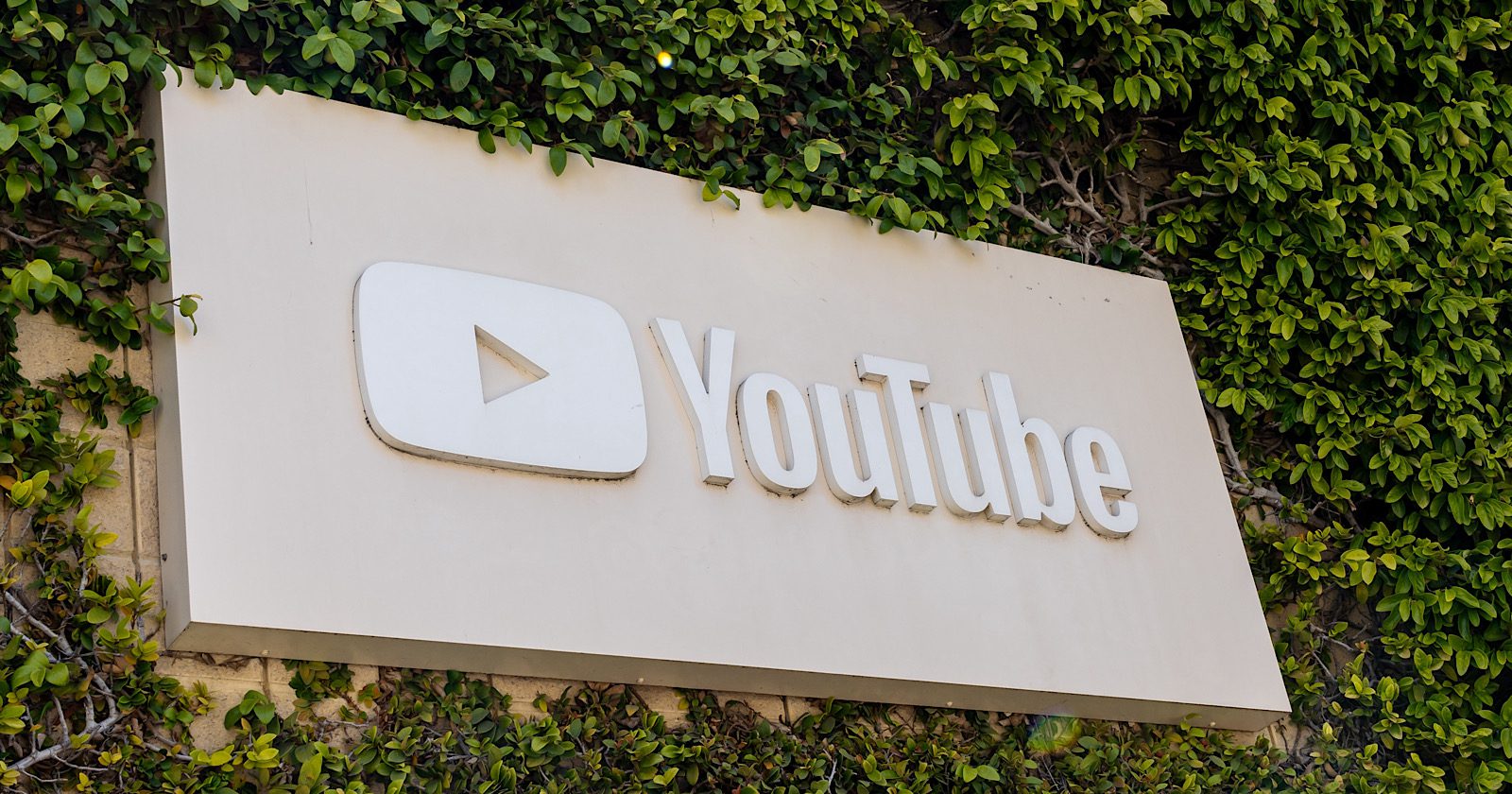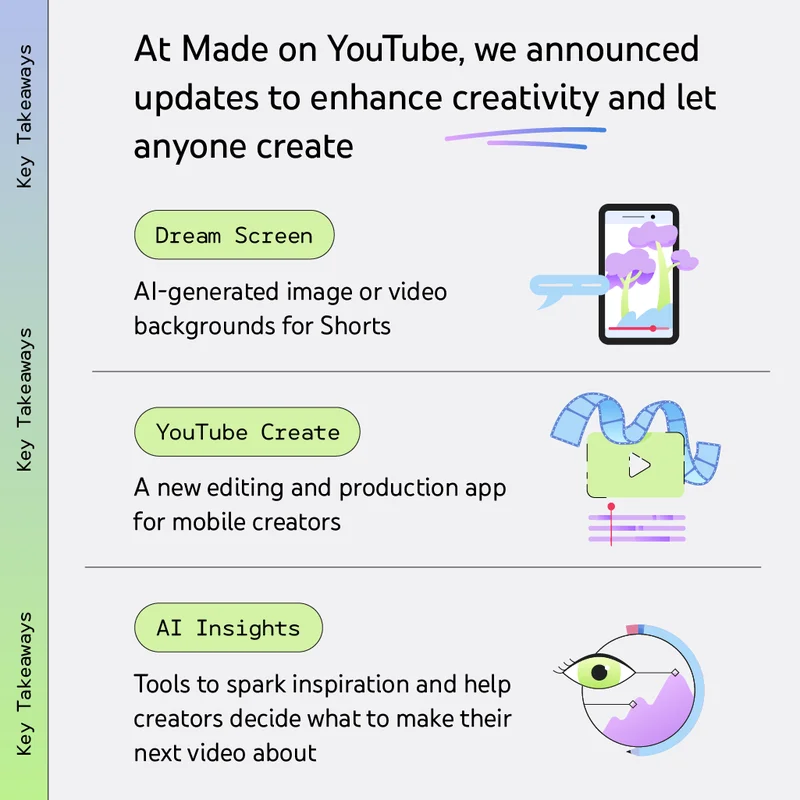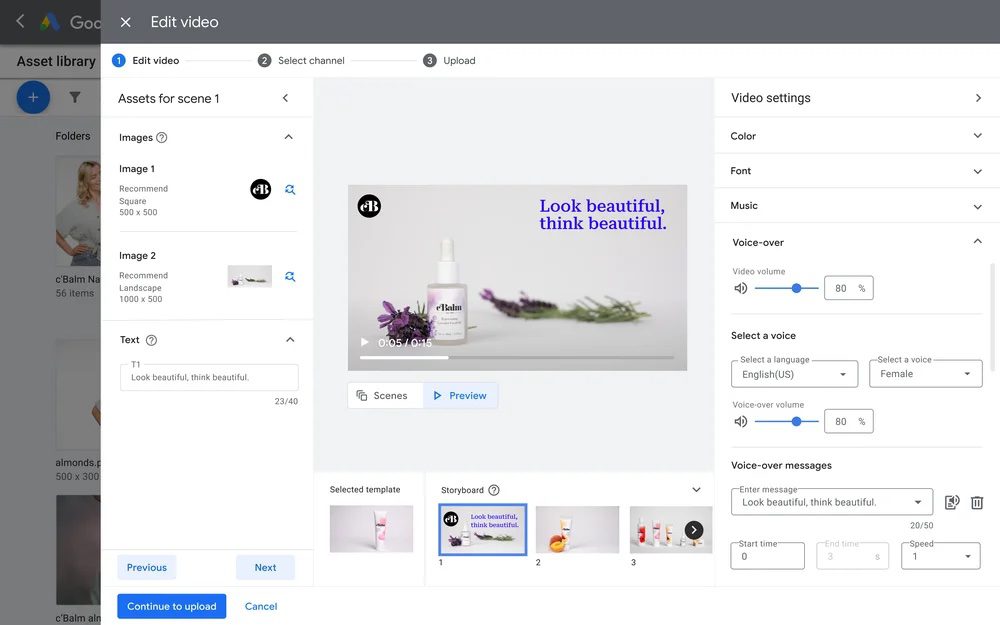Celebrate the Holidays with some of SEJ’s best articles of 2023.
Our Festive Flashback series runs from December 21 – January 5, featuring daily reads on significant events, fundamentals, actionable strategies, and thought leader opinions.
2023 has been quite eventful in the SEO industry and our contributors produced some outstanding articles to keep pace and reflect these changes.
Catch up on the best reads of 2023 to give you plenty to reflect on as you move into 2024.
This is the third iteration of my YouTube Top Viral Videos of All Time list. The first one included the top 25 YouTube videos that had “gone viral” up to that point in time, and my third list has improbably arrived at 42.
Some YouTube gurus say a video “goes viral” when it gets more than 1 million views. Other video marketing experts say this threshold should be bumped up to 5 million views for any video uploaded after 2011.
As I pointed out in “How to make a video go viral,” there is no industry standard definition of “viral video.”
I generated the list from 2.6 million videos created by 624,000 accounts that all have more than 5 million views and 100,000 engagements using all available data.
From the data I used, I estimate the odds of a video going viral are 3,192 to one.
Hopefully, this list will provide you with some inspiration and practical lessons that you can apply when you create a video worth watching and content worth sharing.
Top 42 Viral Videos Of All Time
Innovators And Early Adopters: April 23, 2005 – April 22, 2008
So, when did innovators and early adopters adopt the innovative idea of creating viral videos?
1. “Me At The Zoo”
The Very First Video Uploaded To YouTube was published on April 23, 2005.
The 19-second-long video features Jawed Karim, one of YouTube’s co-founders, who says that the two elephants that he is standing in front of at the San Diego Zoo have long trunks. Um, okay.
According to Wikipedia,
“Greg Jarboe describes the video’s representation of an ‘ordinary moment’ to be ‘extraordinary’ for its time, demonstrating YouTube co-founder Jawed Karim’s vision of what YouTube would become.
According to Jarboe, ‘Me at the zoo’ showed that YouTube was not simply about trying to ‘capture special moments on video’ but rather trying to empower YouTube users ‘to become the broadcasters of tomorrow.’ This paved the way for YouTube to become the world’s most popular online video-sharing community.”
This explains why this short clip of an “ordinary moment” has now amassed a total of 271 million views and 25.1 million engagements over the past 18 years, which is “extraordinary.”
2. “Lazy Sunday”
Another video that helped to put YouTube on the map was uploaded in December 2005, it was a bootleg copy of the Saturday Night Live skit, “The Chronicles of Narnia Rap.”
How popular was this video? David Itzkoff of The New York Times reported back then that “Lazy Sunday” racked up 1.2 million views in its first 10 days.
And LeeAnn Prescott of Hitwise reported in December 2005 that visits to YouTube had shot up 83% since the video had been uploaded – and had passed visits to Google Video. (And the rest is history.)
By the end of January 2006, Prescott reported, “Since my post last month on YouTube and the SNL Chronicles of Narnia rap, YouTube has continued to gain market share against other video search sites, and since surpassing Google Video, it has also surpassed Yahoo! Video Search.”
Then, “Lazy Sunday” was removed from the video sharing site in February 2006. In a post on the YouTube blog, the YouTube staff explained: “NBC recently contacted YouTube and asked us to remove Saturday Night Live’s ‘Lazy Sunday: Chronicles of Narnia’ video. We know how popular that video is, but YouTube respects the rights of copyright holders. You can still watch SNL’s ‘Lazy Sunday’ video for free on NBC’s website.”
Ironically, Saturday Night Live re-uploaded “Lazy Sunday” to its YouTube channel on Aug. 17, 2013 – 7.5 years after it was removed.
Why did SNL do that and what lesson can you learn from this?
Well, copyright owners can monetize their videos on YouTube. But they must split their ad revenue with YouTube. So, someone at NBC finally figured out that SNL could make more money by letting advertisers run ads against “Lazy Sunday” on YouTube, as well as on NBC’s website, than they would get by continuing to hoard their video content on their own site, which gets significantly less traffic.
And it is worth noting that the re-uploaded version of “Lazy Sunday” now has 4.3 million views and 48,400 engagements.
3. “Evolution Of Dance.”
A Third Video That Went Viral In YouTube’s Early Days.
Uploaded by Judson Laipply on April 6, 2006, it now has 312 million views and 1.6 million engagements.
Now, it should have even more views and engagements, but this video was blocked in the U.S. for several years on copyright grounds because it contains content from Warner Music Group (WMG).
Why did they do that and what lesson can you learn from this?
Well, using YouTube’s Content ID system, copyright owners can choose to monetize a video and share revenue with the uploader. Or they can block a whole video from being viewed. So, WMG did not seem to want to share squat with Laipply for several years.
But then the multinational entertainment and record label conglomerate either decided that some revenue was better than no revenue or suddenly started to care about what I had written several years ago when I discovered that “Evolution of Dance” had been blocked.
In either case, do not assume that you can freely sample a song under the “fair use” principle.
And if you want to include some music or sound effects in your videos, without having to negotiate licenses with each copyright owner, then use the YouTube Audio Library to find high-quality audio tracks, which are royalty-free.
Google announced the acquisition of YouTube on October 9, 2006, and the deal was finalized on November 13, 2006. Google paid $1.65 billion in stock for YouTube. By putting their stamp of approval on YouTube, Google decreased the uncertainty around the innovative idea of creating viral videos, too.
4. “Chocolate Rain Original Song By Tay Zonday”
Another Viral Video From The Early Days uploaded on April 23, 2007, it now has 136 million views and 1.9 million engagements.
Here is the backstory. The video was originally posted on 4chan.org, where Zonday’s breathe-away-from-the-mic move was mocked, and many parody videos were made in response.
But “Chocolate Rain” did not go viral until July 2007, when YouTube simultaneously featured all the parody and response videos on its home page.
Okay, what lessons can we learn from this viral video with its unconventional lyrics and delivery?
Well, even if you are mocked (by the self-appointed trendsetters), you can still get the last laugh when you are invited on Jimmy Kimmel Live and then go on to get “paid a hefty, hefty fee” when your video becomes part of a promotional campaign for Cherry Chocolate Diet Dr. Pepper.
5. “Potter Puppet Pals: The Mysterious Ticking Noise.”
Another Example From The Early Days uploaded by Neil Cicierega on Mar. 24, 2007, it now has 202 million views and 2 million engagements.
This was the third video in a series that Cicierega had uploaded to his YouTube channel, which used live-action puppetry to parody the Harry Potter novels by J. K. Rowling.
Upon hearing a ticking noise, Severus Snape sings to it. Other characters join in until they discover the source of the ticking is a pipe bomb, which subsequently explodes. The video was the landslide winner in the Comedy category of the 2008 YouTube Awards.
MTV interviewed Alan Rickman at the New York premiere of “Harry Potter and the Deathly Hallows – Part 2”, and he said, “(Potter Puppet Pals) is very beautifully done, that little piece of work. Can you get rich from that? I hope they did.”
6. “Charlie Schmidt’s Keyboard Cat! – THE ORIGINAL!”
Uploaded on June 7, 2007, this video now has 71.7 million views and 1.7 million engagements.
This video features a tabby, which appears to play a tune on a keyboard. Seen on its own, it makes no sense. But, when Brad O’Farrell found the footage and placed it at the end of another video, it spread like wildfire.
“Play him off, Keyboard Cat” became a way to signal it was time to wrap it up after an awkward situation or slip-and-fall blooper.
Keyboard Cat mashups added a touch more absurdity to already absurd situations, like a man falling off a treadmill or Miss Teen South Carolina flubbing her geography. Combine that with the Internet’s penchant for funny cat videos, and a craze is born.
7. “Yes We Can – Barack Obama Music Video”
The Final Video From YouTube’s Early Days uploaded on Feb. 2, 2008, it now has 26.8 million views and 139,000 engagements.
Produced by will.i.am and directed by Jesse Dylan, the music video was inspired by Obama’s concession speech on Jan. 8, 2008, after Hillary Clinton won the Democratic Presidential Primary in New Hampshire.
Although “Yes We Can” samples Obama’s voice and the lyrics are direct quotations from his speech, which was written by Jon Favreau, the Obama For America campaign was not involved in its production.
Nevertheless, the Emmy-winning music video featuring a star cast helped a skinny kid with a funny go on to win not only the Democratic nomination, but also the Presidency of the United States in 2008.
And from my point of view, it not only represents the end of YouTube’s early days. It also marks the moment when the video-sharing site went mainstream.
Early Majority: April 23, 2008 – April 22, 2014
As this era started, there was growing evidence that creating viral videos was an innovative idea.
8. David After Dentist
Uploaded on Jan. 31, 2009, it now has 142 million views and 570,000 engagements.
In May 2008, David DeVore Sr. took a video of his son, David Jr. For the next seven months, he only shared the video with family and friends. Then, he uploaded it to YouTube to make it easier to share.
David Sr. has said,
“Due to the limit YouTube has for the number of emails you can send the link to for private sharing, I chose to make it public thinking no one would think it was as funny as we did. Shows you what I know.”
The video went viral and the DeVore family was soon invited to join the YouTube Partner Program, which enabled them to monetize “David After Dentist.” According to Time: “And it’s paying off: the DeVores have made nearly enough to cover David’s (eventual) college education.”
What lesson does this example teach marketers?
It features a cute kid. Does that help a video go viral?
Well, Dr. Karen Nelson-Field conducted some rigorous research on this topic at the University of South Australia’s Ehrenberg-Bass Institute for Marketing Science. And she published her findings in “Viral Marketing: The Science of Sharing.”
And according to Dr. Nelson-Field’s research, a baby/young child does outperform many other creative devices, but only when the video evokes high-arousal emotions.
9. Susan Boyle – Britain’s Got Talent 2009
Uploaded in April 2009, this video had 96 million views as of August 2010, when the clip was removed from Britain’s Got Talent channel due to a copyright claim by Alain Boublil Music Ltd.
But there are still copies on YouTube. This includes “Susan Boyle – Britains Got Talent 2009 Episode 1 – Saturday 11th April | HD High Quality,” which now has 262 million views and 1.2 million engagements.
So, what is the lesson that you can learn from the viral videos featuring Susan Boyle?
Dr. Nelson-Field reported,
“When a video included a creative story of personal triumph, it was shared more than other creative devices.”
She added,
“Interestingly, despite being a more applicable creative device for ensuring sharing success, personal triumph is rarely displayed in viral video content. In our sample of 800 videos, it appeared in less than 3% of all videos.”
She concluded,
“Personal triumph therefore represents the best opportunity for marketers.”
10. NASA | Sarychev Volcano Eruption from the International Space Station.
Uploaded on July 1, 2009, it now has 103 million views and 3.8 million engagements.
What lesson does this short clip teach us? Dr. Nelson-Field’s research also found that science/weather/nature-oriented videos also achieved, particularly good sharing rates.
But, like personal triumph videos, they are also rare. So, this creative device represents the second-best opportunity for content creators and video marketers.
11. JK Wedding Entrance Dance
Uploaded on July 20, 2009, my 11th example now has 105 million views and 569,000 engagements.
What lesson does this viral video teach us?
Well, in my recent article, “How to make a video go viral,” Dr. Nelson-Field says,
“Content that draws a High Arousal Positive emotional response is shared more. In particular, videos that evoke feelings of hilarity, inspiration, astonishment, and exhilaration tend to be shared the most.
However, while video creators may be aiming to create hilarious and inspiring material, most are falling well short on both counts.”
That is such a significant strategic insight that it is worth quoting her a second time in this article.
12. Old Spice | The Man Your Man Could Smell Like
Uploaded on Feb. 5, 2010, it now has 61,4 million views and 280,000 engagements.
Maybe I don’t need to point out the obvious, but this viral video is an ad. In fact, it was part of a campaign that consisted of eight YouTube videos, which tallied a total of 98.7 million views and 337,000 engagements.
And the campaign was for an everyday hygiene item, so who would have guessed that it would go viral?
But that is not all. In July 2010, Noreen O’Leary and Todd Wasserman of Adweek reported that monthly sales of Old Spice Body Wash had increased 107% after the campaign.
So, are there any other lessons to learn? Well, this viral video features a “talking head.” That is the derogatory term given to TV commercials that consist of a promoter extolling the virtues of a product.
Many agency people argue that talking heads are not “creative.”
But, as David Ogilvy said in his classic book, “Ogilvy on Advertising,”
“When I write an advertisement, I don’t want you to tell me that you find it ‘creative.’ I want you to find it so interesting that you buy the product.”
Amen.
13. BED INTRUDER SONG!!!
Uploaded on July 31, 2010, by Schmoyoho, it now has 154 million views and 1.4 million engagements.
What can marketers learn from the most-watched video of 2010? The Gregory Brothers took the quirky television interview that Antoine Dodson gave after his sister’s attempted assault and turned it into a chart-topper for Auto-Tune the News.
14. Rebecca Black – Friday
My Next Example Also Includes a song. Originally uploaded in March 2011 to Ark Music Factory’s channel, that version got more than 166 million views before it was removed from YouTube in June 2011 due to legal disputes between ARK Music and Black.
However, the “official version” was uploaded to Rebecca’s channel on Sept. 17, 2011, and now has 166 million views and 2.4 million engagements.
So, what is the backstory? This video did not go viral until sites like BuzzFeed and Reddit posted it as “the worst song ever.” So, Black’s pop anthem went viral because people were making fun of her.
But Jeremy Scott, the co-founder of CinemaSins, thinks we all got trolled hard. In March 2011, he wrote in Tubular Insights,
“We’ve been set up and manipulated – played like a second-hand guitar. Not by Black, mind you – I remain fairly convinced that she’s just a normal 13-year-old. I think the real puppet master here is Ark Music Factory.”
He added,
“Ark Music Factory is the company that produced the video, and I think they made this whole thing happen. To be clear: I think they knew the song was bad… I think they uploaded it anyway… and I think they set about using social bookmarking and social media sites to specifically gain the video some views based on its poor quality.”
Now, he admitted at the time,
“I don’t have any proof… obviously. But I do have plenty of red flags and circumstantial evidence.”
This included:
- The video was initially on Ark Music Factory’s channel, not Rebecca Black’s.
- The Internet picked this video as the one to mock on the same day.
- Ark’s website had banner ads to buy their artists’ songs on iTunes.
- People often game curated sites for marketing purposes.
What lessons can you learn from this?
Te are 5,542 parodies and remixes of Rebecca Black’s “Friday” on YouTube with a total of 815 million views and 9.8 million engagements.
So, even if you are skeptical of Scott’s theory, you should still carefully consider his conclusion: “The adage that ‘there’s no such thing as bad publicity’ has never been more true than it is today…. If you think marketing companies are not savvy enough to know that and attempt to capitalize on it – even to the point of mocking the thing they’re charged with promoting – then you’re pretty naive.”
15. Kony 2012
A Little-known Non-profit Made, uploaded on March 5, 2012, it now has 103 million views and 1.8 million engagements.
The incredible success of this 30-minute video demonstrates how an unknown entity can still make a global impact in social media with powerful content and a savvy marketing strategy. What lessons can you learn from its success?
Well, in July 2007, Mary Madden, a Senior Research Specialist for the Pew Internet & American Life Project, had said, “Young adults are the most ‘contagious carriers’ in the viral spread of online video.”
And in March 2012, a new report on the viral “KONY 2012” video by Lee Rainie, Paul Hitlin, Mark Jurkowitz, Michael Dimock, and Shawn Neidorf for the Pew Research Center found the same pattern.
According to Pew’s report, those 18 to 29 years old were much more likely than older adults to have heard a lot about the “KONY 2012” video. And they were also much more likely than older adults to have learned about it through social media, rather than traditional news sources.
In addition, younger adults were more than twice as likely as older adults to have watched the video itself on YouTube or Vimeo. So, this should be your target audience, too.
16. PSY – GANGNAM STYLE (강남스타일) M/V
An Obvious Choice For This List.
Uploaded on July 15, 2012, this music video now has 4.8 billion (with a “b”) views and 32.3 million engagements.
As Kevin Allocca, YouTube trends manager, said in a post on the Official YouTube Blog,
“This year, Korean Pop music transcended boundaries and took the world by storm.”
And as Chris Atkinson added in a post on Tubular Insights, “This is a gigantic breakaway hit because, yes, the song is catchy, but the video has everything you want: Lunacy, hot girls, and a funky dance.”
17. Rewind YouTube Style 2012
A Not-So-Obvious Choice For This List.
YouTube uploaded this video on Dec. 18, 2012, and it now has 196 million views and 1.8 million engagements.
Why is a video produced by YouTube worth adding to this list? Well, YouTube Rewind started in 2010 as a simple “top videos” list. And the first two videos in the annual series recapped each year’s viral videos, events, trends, and music. Meh.
But in 2012, YouTube debuted a new Rewind format that recreated the year’s top music videos, memes, and moments in vignettes that featured creators themselves.
One way to ensure that your video goes viral is to include more than 32 YouTube Stars in a mash-up of culturally defining moments of the year. Watch the video and see if you can spot all the now decade-old references.
18. Dove Real Beauty Sketches | You’re more beautiful than you think
Dove uploaded this video on April 14, 2013, and this enlightening video now has 70.4 million views and 196,000 engagements.
As the video’s description says,
“In one of the most famous Dove films, Real Beauty Sketches explores the gap between how others perceive us and how we perceive ourselves. Each woman is the subject of two portraits drawn by FBI-trained forensic artist Gil Zamora: one based on her own description, and the other using a stranger’s observations. The results are surprising…”
Dove uploaded a second version of the video, “Dove Real Beauty Sketches | You’re more beautiful than you think (6mins),” the same day. And It now has 11.8 million views and 163,000 engagements.
Why did both videos go viral?
Well, Susan Wojcicki, the former CEO of YouTube, wrote an op-ed in Adweek that said,
“These video ads don’t just generate impressions, they leave impressions. Women ages 18-34 are twice as likely to think highly of a brand that made an empowering ad and nearly 80% more likely to like, share, comment, and subscribe after watching one.
We also ran ad recall studies on eight of the campaigns on the Empowering Ads Leaderboard, and all performed in the top 25 percent of their categories, with most in the top 10 percent.”
Wojcicki also asked, “So if empowering ads are so effective, why are we only seeing them now?”
She said,
“Partly because women are being called upon to advertise to women. Despite the disappointing fact that only 11% of creative directors are women, half of the creatives responsible for the empowering ads on our Leaderboard were women.
With women expected to control two-thirds of consumer spending in the U.S. over the next decade, creative agencies would be wise to empower women not just in their video ads but in their own ranks.”
19. Ylvis – The Fox (What Does The Fox Say?)
Uploaded on Sept. 3, 2013, my 19th example now has 1.1 billion views and 9.6 million engagements.
If I need to defend my inclusion of this music video, then I can point to Allocca’s post on the Official YouTube Blog, which listed “What Does The Fox Say?” as the top Trending Videos for 2013.
Why did this video go viral? It features people dressed in animal costumes and lots of funky dancing. Is this just a strange coincidence?
On the other hand, two other viral videos from YouTube’s ninth year don’t feature any of that.
20. GoPro: Backflip Over 72ft Canyon
Uploaded on Oct. 22, 2013, this sports video shows Kelly McGarry flipping over a 72-foot-long canyon gap at Red Bull Rampage 2013 to earn second place. The video now has 221 million views and 2.6 million engagements.
21. FIRST KISS
As the video’s description says, “We asked 20 strangers to kiss for the first time….” Uploaded on March 10, 2014, it now has 152 million views and 671,000 engagements.
Here is the backstory: WREN, a small brand with limited resources, surprised the fashion industry by creating one of the most talked-about marketing campaigns of the year.
Just a month after its release, “First Kiss” had increased website traffic by 14,000% and sales by 13,600%.
Late Majority: April 23, 2014 – April 22, 2020
This era teed off when Facebook announced that videos uploaded directly to Facebook (aka “native videos”) would get a big boost in its News Feed, while “links to other sites, including video sites” (aka YouTube), would be ranked like they always had.
And Facebook’s chokehold on the YouTube videos that users shared on Facebook prompted many influencers, media companies, and brands to start creating two versions of their video content: one for YouTube and another for Facebook.
The advent of this multiplatform strategy also had a negative impact on YouTube’s views and engagement.
22. Bill Gates ALS Ice Bucket Challenge
In the summer of 2014, the ALS Ice Bucket Challenge inspired 17 million people to upload videos, which were watched more than 10 billion times by about 440 million people around the world. And despite Facebook’s boost to native videos, the 40 social videos that went viral were all YouTube videos
It is worth noting that Gates accepted Mark Zuckerberg’s ALS Ice Bucket Challenge. Uploaded to the Bill Gates channel on YouTube Aug. 15, 2014, the video got 37.8 million views and 825,000 engagements.
It is also worth noting that the 2014 ALS Ice Bucket Challenge raised over $115 million worldwide. Pretty impressive for a fundraising event powered by viral videos.
In 2015, many media companies made a “pivot to video.” They shifted from creating text-based to video content – based on the idea that videos were more lucrative from a revenue perspective and would keep consumers more engaged than written articles.
For example, Jonah Peretti, BuzzFeed’s CEO, told Recode’s Peter Kafka that he planned to “fish for eyeballs in other people’s streams” – in particular, Facebook’s. BuzzFeed’s content, which featured listicles, online quizzes, and pop culture articles, shifted to include food videos and recipes on Tasty as well as high-profile scoops on BuzzFeed News.
Uploaded by Tasty to Facebook on Oct. 7, 2015, this video got 191 million views and 5.5 million engagements.
For a time, Peretti’s plan seemed to be working well. In 2015 alone, BuzzFeed’s brands uploaded 1,192 viral videos – 916 to Facebook and 276 to YouTube.
And the typical viral video on Facebook got 22.3 million “views” and 561,000 engagements, while a typical viral video on YouTube got 12.4 million “views” and 172,000 engagements.
Remember we are comparing big apples to small oranges when comparing views. But if you compare engagements, which are similar across social video platforms, then you can understand why BuzzFeed thought fishing in other people’s streams seemed like a clever idea at the time.
Ironically, YouTube videos continued to go viral – even after Facebook had applied its choke hold.
24. Obama out:’ President Barack Obama’s hilarious final White House correspondents’ dinner speech
Uploaded by Global News on April 30, 2016, this funny video of an annual event now has 56 million views and 619,000 engagements.
Here is the backstory: As President Obama was getting set to leave office, he did not hold back in his final speech at the White House correspondents’ dinner, firing barbs at himself, Justin Trudeau, Hillary Clinton, Bernie Sanders, Donald Trump, and Ted Cruz.
Obama said, “If this material works well, I’m going to use it at Goldman Sachs next year. Earn me some serious Tubman’s.”
Hey, there are lots of lessons that marketers can learn from this guy. Obama’s 2008 presidential campaign team was named #1 in the Fast Company 50. The magazine said,
“This year’s most successful startup took a skinny kid with a funny name and turned him into the most powerful new national brand in a generation.”
Fast Company added,
“The team has become the envy of marketers both in and out of politics for proving, among other things, just how effective digital initiatives can be.”
25. It’s The Simple Joys In Life….
The next example went viral the following month and changed the viral video landscape as we know it.
Uploaded by Candace Payne to her Facebook page on May 19, 2016, the video now has 182 million views and 2.9 million engagements.
Altogether, 1,575 videos of the “Chewbacca Mask” lady or woman were uploaded: 725 to YouTube, 479 to Facebook, and 371 to Instagram.
But they got 152 million views and 3.8 million engagements on Facebook, 45.0 million views and 465,000 engagements on YouTube, and 4.0 million views and 533,000 engagements on Instagram.
And even though social video platforms have different definitions of a view, an engagement is an engagement. And what lesson did everyone in the social video industry learn from that? Well, shortly after Payne’s video went viral, Facebook started making moves to become “video first,” according to USA Today.
And shortly after that, the process of going viral started mutating in unexpected directions – for YouTube as well as Facebook. Coincidence? I think not!
Up to this point in time, YouTube content creators had relied on their imagination to create great content that might get an intense psychological response like hilarity, inspiration, astonishment, and exhilaration that would trigger the social motivations to like, comment on, and share their video.
And YouTube content creators had relied on advertising to monetize their views and engagements – with some earning five figures per year at first and then six figures per year.
26. Baby Shark Dance | #babyshark Most Viewed Video
Uploaded on June 17, 2016, the most-viewed video on YouTube now has 12.9 billion (with a “b”) views and 40.4 million (with an “m”) engagements.
Some of the brands and agencies running the ads that appear before this video starts are targeting Gen Alpha.
But many advertisers are targeting parents, who are millennials – although they are also reaching a few grandparents, who are baby boomers, some babysitters, who are members of Gen Z, and a couple of daycare providers, who are members of Gen X.
Demographics rarely tell the whole story.
With YouTube videos continuing to go viral, more brands started borrowing pages out of the YouTube creator playbook for brands, which shared the know-how developed by a generation of YouTube content creators to develop content strategies that would resonate with 21st-century consumers.
27. Samsung India Service (SVC) – Most Watched Video in 2017
Uploaded to the Samsung India channel on Dec. 30, 2016, this four-minute-long video now has 212 million views and 231,000 engagements.
The video’s description says,
“This video shows a story of how a young Samsung Engineer undaunted by rough terrain, attends to a customer complaint in a remote hilly area. His efforts help bring up smiles on the faces of a group of children, for whom their Samsung Television is the medium to celebrate their special moment.”
28. Luis Fonsi – Despacito Ft. Daddy Yankee
Uploaded on Jan. 13, 2017, this music video now has 8.2 billion (with a “b”) views and 55.8 million engagements.
What lessons can you learn after watching (and listening to) “Despacito”?
It turns out that alumni of the Berklee College of Music, the world’s largest independent college of contemporary music, have been involved in creating three of the most-viewed YouTube videos.
This includes Park Jae-Sang (PSY), who attended Berklee from 1999 to 2000 before dropping out to create “Gangnam Style;” Charlie Puth, who graduated in 2013 before being in the chorus of “See You Again,” which now has 5.9 billion views and 43.3 million engagements; and Luis Saldarriaga, who graduated in 2014 before becoming the recording engineer for “Despacito.”
In addition, Berklee’s official YouTube channel, which uploads new videos each Monday, Wednesday, and Friday, saw 8 videos go viral from April 23, 2014, to April 22, 2020. These viral videos got a total of 190 million views and 2.0 million engagements.
Nevertheless, from this point on, many brands started partnering with content creators on all social video platforms to create sponsored videos.
29. Ping Pong Trick Shots 3 | Dude Perfect
Uploaded to Dude Perfect’s YouTube channel on April 3, 2017, this sponsored video for Oreo now has 320 million views and 7.1 million engagements.
To increase the odds of having their videos “go viral,” a few (but not many) brands started acting as if they were media companies. One of these brands is Red Bull.
For example, the energy drink company has quietly changed its video marketing strategy over the years. The brand’s old strategy was to create a couple of pieces of “hero” content every year – like “Felix Baumgartner’s supersonic freefall from 128k’ – Mission Highlights.”
The Red Bull Stratos space diving project, which took place back on Oct. 14, 2012, was viewed live by over 9.5 million users, setting a record at the time for the live stream with the most concurrent views ever on YouTube. And the “Mission Highlights” video now has 47.9 million views and 256,000 engagements.
During the late majority era, Red Bull’s strategy shifted to creating an ongoing stream of videos that have gone viral a lot more frequently.
30. Door in the Sky
Uploaded to Red Bull’s Facebook page on Nov. 28, 2017, it now has 266 million views and 5.6 million engagements.
But that is just the tip of the iceberg.
From April 23, 2014, to April 22, 2020, Red Bull uploaded 190,000 videos to 134 Facebook accounts, which got a total of 16.5 billion (with a “b”) views and 345 million engagements.
The brand also uploaded 30,500 videos to 79 YouTube channels during that period, which got a total of 5.2 billion (with a “b”) views and 63.4 million engagements.
In addition, the energy drink uploaded 88,200 videos to 173 Instagram accounts, which got a total of 4.5 billion (with a “b”) views and 583 million engagements.
And 289 of these videos got more than 5 million views, as measured by the platform, and 100,000 engagements. So, over a six-year period, Red Bull was creating almost one viral video a week.
How did the energy drink brand accomplish this extraordinary feat? By acting like a media company that provided exclusive video coverage of a series of Red Bull events.
This video content attracted, engaged, and retained an enthusiastic audience of fans interested in motorsports, biking, skateboarding, winter sports, adventures, gaming, surfing, and cliff diving, as well as other kinds of contests like Red Bull Flugtag, an international event where competitors design and build human-powered flying machines.
31. Mother Dog Cries For Help So Someone Will Save Her Baby
Uploaded to The Dodo’s Facebook page on Nov. 23, 2019, this video now has 132 million views and 7.0 million engagements.
And this was not a fluke. A total of 2,359 videos from The Dodo’s parent company, Vox Media, went viral during the two years before the so-called Facebook Apocalypse. And they got a total of 39.0 billion views and 1.1 billion engagements.
And 1,944 videos from Vox Media, the leading independent modern media company, went viral during the two years after the so-called Facebook Apocalypse. And they got a total of 28.7 billion views and 955 million engagements.
32. Make This Video The Most Liked Video On YouTube
Uploaded by Jimmy Donaldson (aka MrBeast) on Jan. 16, 2019, this YouTube video now has 132 million views and 26.9 million engagements.
MrBeast uploaded a total of 43 viral videos during the two years before the so-called Facebook Apocalypse. And they got a total of 898 million views and 29.9 million engagements.
And he uploaded a total of 157 viral videos during the two years after the so-called Facebook Apocalypse. And they got a total of 10.6 billion views and 278 million engagements.
33. Excited to be a Bianconero! #ForzaJuve EASPORTSFIFA #FIFA19
Uploaded by Cristiano Ronaldo to his Instagram account on July 18, 2018, this video was sponsored by EA Sports FIFA and now has 26 million views and 4 million engagements.
34. World record experiment
Uploaded by David Dobrik and Nick Uhas on Sept. 25, 2019, this “crazy take on Elephant Toothpaste” now has 186.3 million views and 19.0 million engagements.
35. Anthony Fauci, the US’s top infectious disease expert, shares what we can all do to fight the spread of the coronavirus (COVID-19)
Uploaded by Meta to Facebook on Mar. 19, 2020, this 38-minute-and-14-second-long live video now has 51.6 million views and 219,000 engagements.
Yes, that’s Mark Zuckerberg interviewing Dr. Fauci. And no, you do not see that every day. But after more than 118,000 cases in 114 countries and 4,291 deaths, the World Health Organization (WHO) had declared COVID-19 a pandemic on Mar. 11, 2020.
So, everyone in the United States knew we were entering extraordinary times. And extraordinary times called for innovative measures.
Laggards: April 23, 2020 – April 22, 2023
In the previous era, from April 23, 2014, to April 22, 2020, 397,000 videos went viral on YouTube, getting a total of 12.0 trillion (with a “t”) views and 121 billion engagements.
At the same time, 548,000 videos went viral on Facebook, getting a total of 7.6 trillion views and 205 billion engagements, while 29,300 videos went viral on Instagram, getting a total of 247 billion views and 25.3 billion engagements.
In the new era, from April 23, 2020, to April 22, 2023, 959,000 videos went viral on YouTube, getting a total of 17.0 trillion (with a “t”) views and 536 billion engagements.
At the same time, 589,000 videos went viral on Facebook, getting a total of 8.2 trillion views and 213 billion engagements. In comparison, 6,600 videos went viral on Instagram, getting a total of 51.7 billion views and 6.6 billion engagements.
In other words, YouTube’s share of viral videos has grown from 40.8% to 59.9%, while Facebook’s share has dropped from 56.3% to 36.8%, and Instagram’s share has shrunk from 3.0% to 0.4%.
36. Don’t Use Glue On Your Macbook…. WHY? #Shorts
Uploaded by Suhaib El-Komy, aka the Phone Repair Guru, on April 23, 2020, this short YouTube video now has 27.7 million views and 1.3 million engagements.
YouTube did not roll out Shorts globally until July 13, 2021.
So, it appears that El-Komy, who is based in Canada, uploaded the first YouTube Short to go viral almost 15 months before that was possible. Does the Phone Repair Guru have a DeLorean time machine?
According to Google, “After you upload a video, you can change your video details in YouTube Studio. Change everything from your video’s title to caption and comment settings.”
If a content creator in Ottawa, Ontario, had uploaded a short video to YouTube almost 15 months before Shorts was globally released, then it would have been easy to edit the title and description by adding #Shorts.
Why bother? From April 23, 2020, to April 22, 2023, 450,000 YouTube Shorts by 87,400 accounts went viral on YouTube. They got a total of 7.9 trillion (with a “t”) views and 302 billion (with a “b”) engagements.
Do the math, and this means that 46.9% of the 959,000 videos that went viral on YouTube in this era were Shorts. So, I would say this interesting story can teach us an important lesson.
But, even if “YouTube Shorts are the fun, easy way to create content for YouTube’s billions of users,” do not count out longer-form content.
As I mentioned in my post, “Top-Trending 2020 YouTube Videos Demonstrate Longer Is Stronger,” the average length of the top-trending YouTube videos was 18:33 in 2020 and the median length was between 15:43 and 17:13.
37. Backyard Squirrel Maze 1.0- Ninja Warrior Course
Uploaded to Mark Rober’s YouTube channel on May 24, 2020, this 21-minute-and-39-second-long video now has 112 million views and 2.6 million engagements.
The description says, “Squirrels were stealing my bird seed, so I solved the problem with mechanical engineering :).”
And on May 18, 2021, Rober uploaded “Backyard Squirrel Maze 2.0- The Walnut Heist” to YouTube. This 16-minute-and-39-second-long video now has 76.6 million views and 2.2 million engagements on YouTube.
Oh, and Rober uploaded “Backyard Squirrel Maze 2.0 – The Walnut Heist” to Facebook on May 26, 2021. And this 12-minute-and-20-second-long video now has 30 million views and 750,000 engagements.
He also uploaded a 12-minute and 37-second-long version on Mar. 9, 2022, and it now has 12.9 million views and 375,000 engagements.
Not bad at all for a bored engineer, who built epic squirrel obstacle courses in his backyard!
What about TikTok? Surely there is at least one interesting story or an important lesson that I can share despite putting that social video platform on double-secret probation.
Well, TikTok has 17 accounts on Facebook, YouTube, and Instagram which uploaded 2,488 videos that went viral using verifiable data from April 23, 2020, to April 22, 2023.
38. Heartwarming Marriage Proposals
Uploaded by TikTok to Facebook on Feb. 12, 2021, this 3-minute-46-second-long video now has 178 million views and 5.0 million engagements. And even if Facebook views are the equivalent of Mandarin oranges, an engagement is an engagement.
No list of viral videos would be complete without at least one example from The Walt Disney Company, one of the world’s leading producers and providers of entertainment and information.
39. 8 flips in the air | #shorts
Uploaded to the SportsNation channel on Aug. 25, 2021, this YouTube short now has 414 million views and 16.9 million engagements on YouTube.
And this is just one of 2,741 viral videos that Disney’s 204 social video accounts uploaded from April 23, 2020, to April 22, 2023.
This includes: 1,039 videos that were uploaded to YouTube, which got 31.4 billion views and 763 million engagements; 1,635 videos that were uploaded to Facebook, which got 26.0 billion views and 590 million engagements; as well as 67 videos that were uploaded to Instagram, which got 442 million views and 55.5 million engagements.
40. Permission to Dance’ performed at the United Nations General Assembly
This list should also include at least one video featuring BTS, also known as the Bangtan Boys. The South Korean boy band consists of Jin, Suga, J-Hope, RM, Jimin, V, and Jungkook.
Uploaded on Sept. 20, 2021, to the United Nations channel on YouTube, this music video now has 82.9 million views and 3.2 million engagements.
How did BTS get Permission to Dance in a video produced at the United Nations? The video accompanied the bands’ remarks at the SDG Moment, an annual spotlight on the importance of Keeping the Promise of the Sustainable Development Goals and inspiring action.
Plus, from April 23, 2020, to April 22, 2023, a total of 3,306 videos featuring BTS or one of the band members went viral.
This includes: 3,109 videos on YouTube, which got 49.3 billion views and 2.6 billion engagements; 175 videos on Facebook, which got 2.2 billion views and 77.4 million engagements; and 22 videos on Instagram, which got 207 million views and 19,800 engagements.
41. Ping Pong Slide Racing Is INTENSE! #RunOnNitro
This list should also include a sponsored video from Jellysmack, a remote-first company with more than 1,000 employees worldwide.
Uploaded to the How Ridiculous channel on Oct. 3, 2022, this sponsored video for Run on Nitro now has 73.3 million views and 3.0 million engagements on YouTube.
This is just one of Jellysmack’s 57 sponsored videos that went viral from April 23, 2020, to April 22, 2023. And 55 were uploaded to YouTube, where they got 628 million views and 18.7 million engagements, while two were uploaded to Facebook, where they got 13.3 million views and 344,000 engagements.
And when Jellysmack’s employees are not making sponsored videos, they are making viral videos. You know, to grow their channels, build their communities, or make money on YouTube from ads. From April 23, 2020, to April 22, 2023, Jellysmack’s 183 accounts created a total of 3,864 viral videos (including the 57 sponsored ones).
This included 2,926 viral videos that were uploaded to Facebook, where they got 51.1 billion views and 886 million engagements, as well as another 938 viral videos that were uploaded to YouTube, where they got 21.8 billion views and 594 million engagements.
42. Dog gets a sweet fresh cut
Another example that belongs on this list is a viral video from the LADbible Group, a British digital publisher that produces content for young adults.
Uploaded to the Furry Tails Facebook page on Jan. 1, 2023, this 58-second-long video now has 203 million views and 7.0 million engagements.
In addition to Furry Tails, the LADbible Group has 25 other social video accounts, including LADbible, LADbible Australia, UNILAD, Tyla, and STUDENTbible. And from April 23, 2020, to April 22, 2023, these 26 accounts uploaded 4,624 videos that went viral.
This included: 4,569 viral videos on Facebook, which got 62.9 billion views and 1.6 billion engagements; 53 viral videos on YouTube, which got 1.3 billion views and 35.3 million engagements; as well as two viral videos on Instagram, which got 13.5 million views and 1.2 million engagements.
What Lessons Can You Learn From The Top 42 Viral Videos Of All Time?
What does this list of videos that have gone viral tell us about time, the audience, and marketing?
The metric that we should be using is watch time, not views.
As the Global Video Measurement Alliance has said, “View count doesn’t cut it anymore.” That is why they are proposing the 30-second view as the new industry standard.
Watch time is the amount of time people spend watching a video or a collection of videos. It would enable us to compare apples to apples across different social video platforms.
More importantly, the 30-second view would expose the very idea of counting “views” as soon as videos start to autoplay as ridiculous. This ludicrous definition of “views” is just a vanity metric like “impressions.”
To create this list I used Tubular Labs, the world’s largest database of social videos, which goes back to April 23, 2005, and I found a total of 174 million accounts have uploaded 8.3 billion social videos over the past 18 years. I narrowed my search to identify the videos with more than 5 million views and 100,000 engagements using all available data, and found 2.6 million videos created by 624,000 accounts.
Disclaimer: All statistics not linked are from a gated Tubular Labs report.
More resources:
Featured Image: wee dezign/Shutterstock


